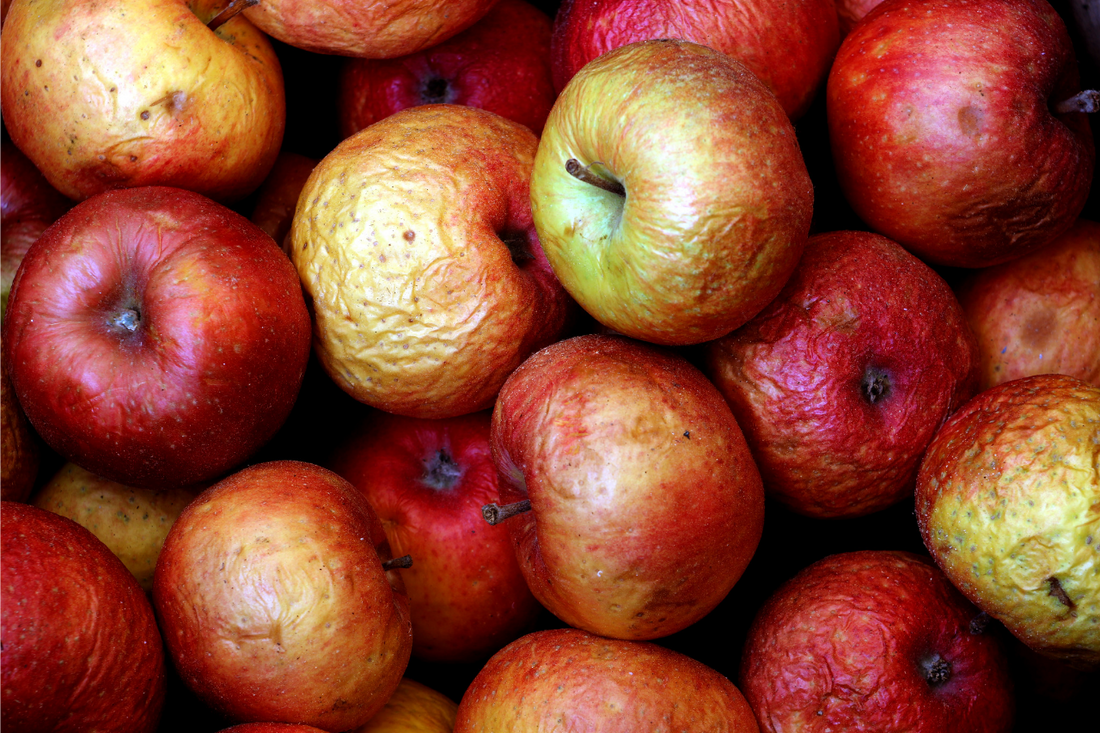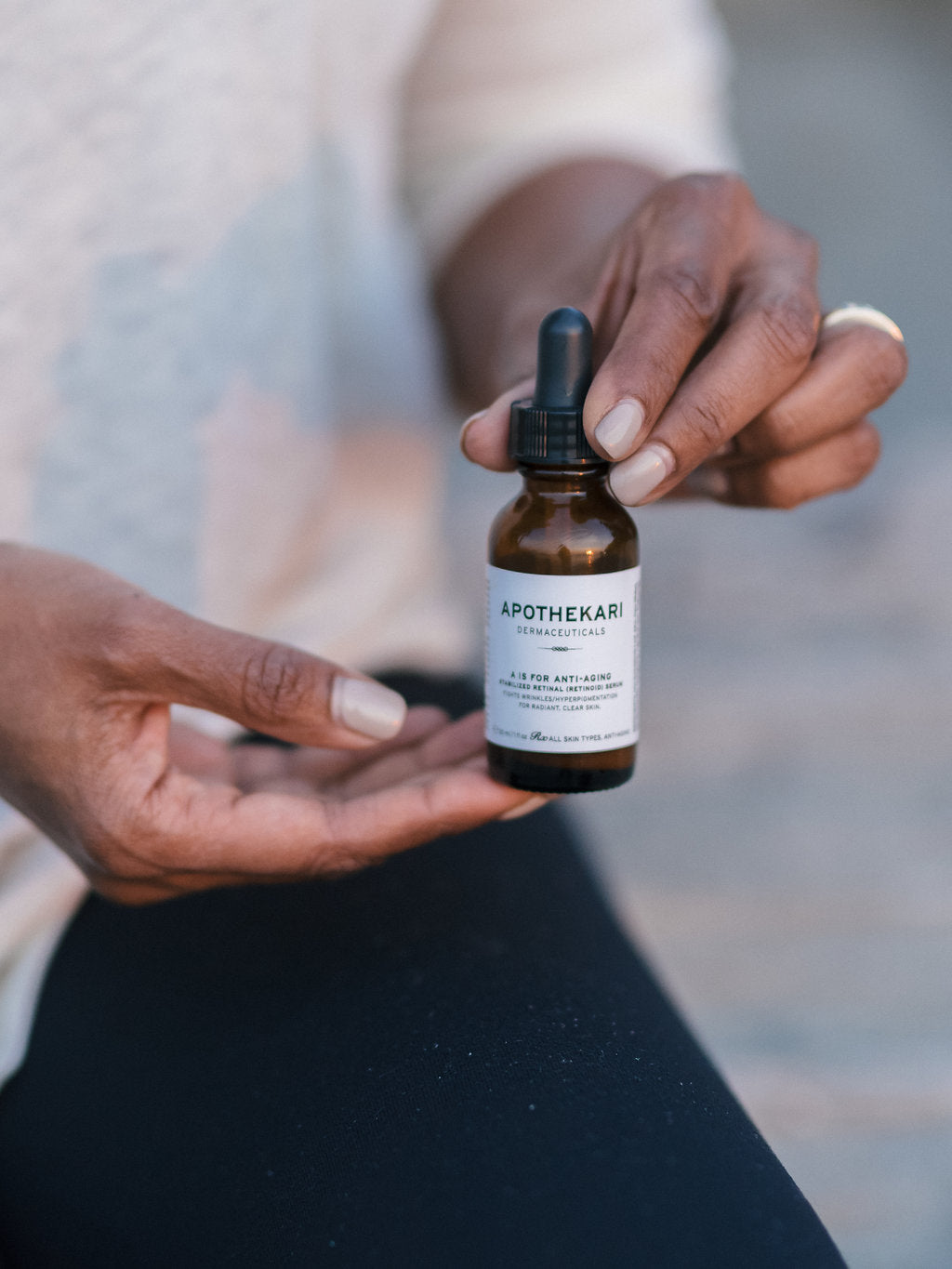Blog
How To Reduce Wrinkles
If you’re curious about how to reduce wrinkles, this post explains that. Wrinkles are one of the most common symptoms of aging skin, but using the right products – a sunscreen like Shade SPF 30 and a retinoid like A is for Anti-Aging Serum, can help to reduce them. Shop A Is for Anti-Aging Serum (Our Retinoid Formulation) What is a Wrinkle? Wrinkles are creases, folds, or ridges in the skin, which tend to appear as we get older. They are most frequently found on parts of the body that are exposed to sunlight, including the face, the neck and chest, the back of the hands and the arms. Sun damage, smoking, some medications and dehydration along with environmental and genetic factors can influence their development. Facial expressions, such as repeatedly smiling, frowning, or squinting may also lead to fine lines and wrinkles. And, the thinner, drier and less elastic skin that accompanies aging, impact their formation as well. Younger skin has more elasticity, allowing it to spring back. The aging process makes springing back harder and less frequent, resulting in permanent lines aka, wrinkles. Wrinkles – Lifestyle and Environmental Factors Unprotected exposure to UV light is thought to be one of the biggest contributors to wrinkle development. UV rays break down collagen and elastin fibers, which form part of the skin’s supporting network. This damage results in skin that is weaker and less flexible, causing it to droop and wrinkles to develop. This is why sun protection is one of the best things you can do to reduce wrinkles. Wear a broad spectrum, UVA/UVB blocking sunscreen with a minimum SPF of 30 every day, year round. Shade SPF 30 is a naturally safe, mineral-based (zinc oxide) and non-whitening formulation to consider Cover up with clothing, seek shade, wear hats and sunglasses to protect skin against sun damage Smoking speeds up the aging process by reducing blood supply to the skin. Excess consumption of alcohol can result in dehydration, which causes skin to become dry and appear more wrinkled. And finally, sleeping on your side or face contributes to face lines while repetitive facial expressions (like squinting) overworks facial muscles and can result in grooves beneath the skin’s surface, which eventually leads to wrinkles. Treatments That Reduce Wrinkles When it comes to topical ingredients, there are a few that can help, but retinoids, which are derived from vitamin A, are supported by the most amount of research to support their efficacy in the reduction of fine wrinkles. They have also been shown to reduce pigmentation and decrease skin roughness. Retinoids include ingredients such as retinoic acid, retinaldehyde, retinol and retinyl palmitate. They work by increasing the production of collagen and by stimulating the production of new blood vessels in the skin, which improves skin color. It takes about three to six months of regular use before improvements in wrinkles are apparent and the best results take six to 12 months. The one downside of retinoids is that they can cause skin dryness and irritation so it may be useful to gradually work up to nightly applications, especially if you have sensitive skin. Retinaldehyde, which is found in A is for Anti-Aging is effective and one of the gentlest forms of retinoid available, making it suitable for most skin types. Retinaldehyde has the added benefit of being antibacterial, which delivers benefit to acne sufferers as well. A is for Anti-Aging also contains niacinamide, which can stimulate collagen production. The combination helps to minimize fine lines and wrinkles. Keep in mind that retinoids are broken down in sunlight so apply this serum at night in order to maximize benefits. A two-pronged approach will serve you best when it comes to wrinkle reduction: sunscreen every day in the morning and a retinoid each night.
Learn moreRetinol. 5 Myths Busted
Retinol and its relatives retinaldehyde, retinyl palmitate and prescription forms including retinoic acid, tazarotene and adapalene, is one of the most effective skin care ingredients to include in your skin care arsenal. Yet, despite the popularity of this effective class of ingredients, there are many misconceptions regarding its use. In this post we’ll look at 5 of the most common ones in an effort to set things straight. What is Retinol? Retinol and other derivatives all come from Vitamin A. It and its related compounds have been around for decades and many studies have shown consistently positive results on skin, including: Improving the skin’s texture Minimizing fine lines and wrinkles Delivering an even skin tone Reducing skin oiliness Managing blemishes Retinoids accomplish this by boosting collagen synthesis and increasing skin cell turnover (helping to speed up the development of new skin cells as we age). You’ll notice an ‘exfoliating’ effect, unclogged pores and less dry, flaky skin upon regular use of retinoids. Retinaldehyde, found in our A is for Anti-Aging Serum, also has anti-bacterial activity, making it a valuable addition in the management of acne. Below, I am setting the record straight on 5 commonly held myths regarding retinol: 5 Retinol Myths 1. Retinol (retinoids) Exfoliates The peeling and redness that accompanies some retinoids is the result of skin irritation and not true ‘exfoliation’. It is also the result of increased skin cell turnover. Despite the painful period of dealing with the peeling, this action is what helps make skin look so good. Build use gradually or try a milder or less sensitizing form of retinoid, like retinaldehyde to minimize this reaction. 2. Don’t Apply Retinoids Around Your Eye This recommendation comes from the belief that under eye skin is extremely sensitive. While it is indeed sensitive, studies have shown that people who apply retinoids right up to the eyes get the best results. As with all new skin treatments, do a patch test first, start slowly and back off if skin becomes very red and irritated. 3. Stop Applying Retinol if Your Skin Gets Irritated Initial skin irritation is part of the process and skin tends to adapt after a few weeks so unfortunately, you may have to put up with it. We’re talking here, about light peeling, increased dryness and some redness. With skin that experiences significant discomfort, discontinue use. Retinaldehyde is the least irritating form of retinoid, yet still delivers results. 4. Use the Strongest Retinoid You Can Find You don’t need to use the most potent retinoid (prescription forms like retinoic acid) to obtain benefits such as increased collagen production and skin cell turnover. While you may get faster results, it’s also true that you may also experience more irritation. This is something I have personal experience with. About to give up with retinoids due to irritation, peeling and redness from various prescription forms, along with non-prescription retinol, I found that my skin tolerated and liked, retinaldehyde very much. In fact, most customers tolerate A is for Anti-Aging very well, with minimal skin irritation. 5. You Should Stop Using Retinol in the Summer While retinol is light sensitive (it breaks down upon exposure to sunlight), there is no reason to stop using it in the summer. You can use retinol year round but always apply at night to ensure that it doesn’t degrade. Diligently apply an effective broad spectrum sunscreen during the day (SPF 30, at least) and you won’t have anything to worry about. Caveats There are a few: Don’t use retinoids if you are pregnant or breast-feeding. Although probably safe, there have been links to birth defects with the use of Vitamin A. Don’t layer retinoids with benzoyl peroxide and alpha hydroxy acids, which may deactivate them. Use caution during waxing, as skin may experience excessive redness with retinoid usage. Don’t use a retinoid for several days before a treatment. A very small amount of individuals have ultrasensitive skin and can never tolerate a retinoid. If you’re one of these people, try using a gentle exfoliation treatment once or twice a week and be extra careful to use sunscreen regularly. Retinoids. What do you say?
Learn more


